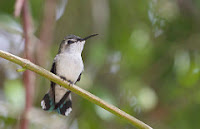Kelposting
 While reading a biography of John Adams several years ago, I was impressed by the fact that he used kelp as a an organic fertilizer on his Massachusetts farm. Our gardening books recommend composting with kelp because it accumulates many important elements that are washed out of our soil and into the Pacific Ocean.
While reading a biography of John Adams several years ago, I was impressed by the fact that he used kelp as a an organic fertilizer on his Massachusetts farm. Our gardening books recommend composting with kelp because it accumulates many important elements that are washed out of our soil and into the Pacific Ocean. For many months now, I have been looking forward to collecting kelp so I could return nutrients to our soil, Founding Father-style.
For many months now, I have been looking forward to collecting kelp so I could return nutrients to our soil, Founding Father-style. On Sunday, I found several strands of bull kelp on the beach at Pacific City.
On Sunday, I found several strands of bull kelp on the beach at Pacific City. I cut the strands into manageable chunks and filled a 5 gallon bucket.
I cut the strands into manageable chunks and filled a 5 gallon bucket. I rinsed the sand and salt off the pieces and cut them in to smaller bits that will break down in the composter.
I rinsed the sand and salt off the pieces and cut them in to smaller bits that will break down in the composter. The kelp is a sort of "green matter" which also includes kitchen scraps and grass clippings. We try to balance green matter by adding twice as much "brown matter," such as dried, shredded leaves.
The kelp is a sort of "green matter" which also includes kitchen scraps and grass clippings. We try to balance green matter by adding twice as much "brown matter," such as dried, shredded leaves. We do not have a large deciduous tree in our yard, so we get most of our leaves from a horse chestnut in a vacant lot on our block.
We do not have a large deciduous tree in our yard, so we get most of our leaves from a horse chestnut in a vacant lot on our block.
Its large leaf and flower buds are now breaking. Next year's brown matter crop is well on its way and we look forward to a productive, kelp-fed garden.


In the pre-industrial revolution, kelp and other ocean plants were a favorite for soap making. The ashes were lixiviated with water to make lye, and the lye then cooked with animal tallow to make soap. Kind of like Granny Clampett down by the cement pond.
ReplyDelete